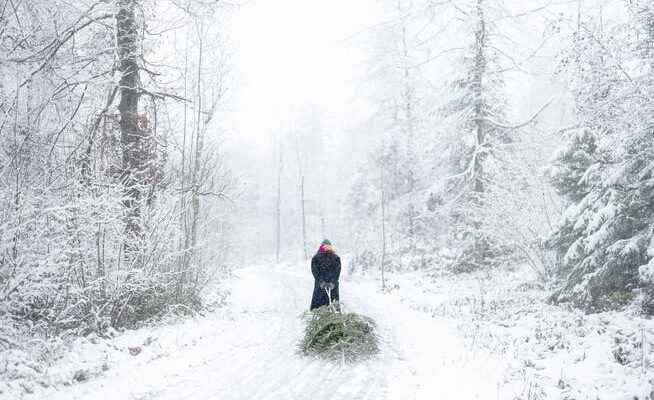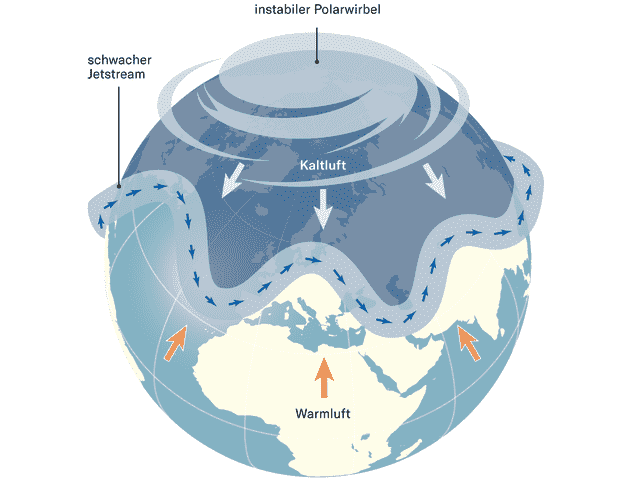At the beginning of December, biting cold had gripped Switzerland, and there was also snow in the cities. The holidays will be warm and green.
At the beginning of December it was Christmas white in Zurich, now the snow has melted.
When snow covered Switzerland with a blanket of white last week, hopes for snowy holidays in the lowlands were high. But now the weather report clearly shows: Christmas will not be cold and white this year, but warm and green. If the thermometer showed numbers in the minus range a few days ago, temperatures of up to 13 degrees are expected at the end of the week.
On the influence of the polar vortex
Whether the snow melts or biting cold prevails in the winter months can depend on the behavior of the so-called polar vortex, a phenomenon of the stratosphere. Every winter, a huge, cold air vortex forms 30 to 50 kilometers high above the North Pole. It occurs where there is no sunlight in winter and the air therefore cools down considerably. The large temperature and pressure differences set the vortex in motion. The same phenomenon can also be observed in Antarctica over the South Pole.
The vortex rotates counterclockwise. If it moves stably, the weather in Europe rarely goes crazy. A “healthy” polar vortex is limited to the outside by a westerly wind current, the so-called jet stream. The cold air of the polar vortex is then trapped in the vortex.
But if the polar vortex gets mixed up, it can get bitterly cold in Europe. This was the case at the end of November, says Urs Graf from Meteo Switzerland. There was a “split” in the vortex. When this happens, the jet stream becomes weak and moves in waves. This in turn causes the low pressure areas to carry cold air from north to south and from east to west. Central Europe is getting cold, as was the case in parts of Europe in early December. Nevertheless, one must be careful with such conclusions, says Graf. “The polar vortex is often hastily invoked as the reason for weather changes.”
So far the vortex is still weak
Basically, the polar vortex had little influence on the weather this winter. This is also due to the fact that he is not yet well trained, says Klaus Marquardt from Meteo News. The longer and colder the polar nights become, the stronger the vortex becomes. According to Marquardt, the conditions will be particularly favorable for this in January and February of next year. At the moment, the polar vortex is “crushed”, cold air packages have spread over the entire northern hemisphere.
How exactly the polar vortex gets mixed up and subsequently determines the weather is difficult to explain. The meteorologists Urs Graf and Klaus Marquardt are careful with assumptions. “The atmosphere is a chaotic system with complicated patterns that influence each other,” says Marquardt of Meteo News. The connections between the stratosphere and the underlying troposphere, in which most of our weather events take place, have not been conclusively clarified.
Temperatures in the double digits
The weather forecast for the upcoming festive season is easier to show. The snow will melt, the temperatures will rise. T-shirt weather on Christmas Eve. The reason for the change in weather is a warm wind coming from the southwest. The reading on the thermometer will be two digits by the end of the week. Meteorologists expect strong gusts of wind over the Christmas period, and it will rain on Friday and Saturday.
This year, too, White Christmases will only remain a postcard motif. This may disappoint, but late December thaws are not uncommon. This is shown by an evaluation by Meteo News. In Zurich, it has only snowed six times on Christmas Day in the past twenty years, the last time in 2013.
According to Urs Graf from Meteo Switzerland, it is still difficult to say what the weather will bring after Christmas. There is a possibility that it will get colder again from Tuesday. It is not yet possible to make reliable forecasts for the end of the year.

